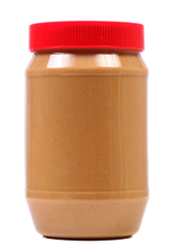- Clinical Technology
- Adult Immunization
- Hepatology
- Pediatric Immunization
- Screening
- Psychiatry
- Allergy
- Women's Health
- Cardiology
- Pediatrics
- Dermatology
- Endocrinology
- Pain Management
- Gastroenterology
- Infectious Disease
- Obesity Medicine
- Rheumatology
- Nephrology
- Neurology
- Pulmonology
Use Peanut Butter to Sniff Out Early Alzheimer Disease?
Peanut butter and a ruler may turn out to be tools that offer an inexpensive, sensitive, and specific olfactory means of screening for Alzheimer disease. Details here.

Add a jar of peanut butter to your armamentarium of screening tools?
If results of this small study of a simple, inexpensive screening test to identify early Alzheimer disease (AD) stand up to broader scrutiny, a small jar of peanut butter and a ruler may turn out to be an inexpensive, sensitive, and specific olfactory means of screening for the disease.
Researchers at the University of Florida noted that few doctors took the time to test their patients for the sense of smell associated with the first cranial nerve. They decided to test a screening method for early AD by comparing olfactory sensitivity between a patient’s right and left nostril to the smell of peanut butter.
Their test was predicated on the fact that portions of the olfactory cortex are the first sites of AD pathology. In persons with AD, there is often more degeneration of the left hemisphere than the right. The researchers note that because the olfactory epithelium projects mainly to the ipsilateral olfactory cortex, patients with AD may demonstrate an asymmetrical (left greater than right) decrease in odor detection sensitivity.
Stamps and colleagues1 screened a small group of patients with this “sniff” test and published their results in the Journal of Neurological Sciences.1 They studied 18 patients with probable AD; 24 with mild cognitive impairment; 26 with “other” causes of dementia; and 26 matched controls.
Here’s how the test works. The patient is seated, eyes closed, with one nostril occluded. A container of 14 g of peanut butter is opened, placed at a measured distance from the open nostril, and moved closer to the nostril 1 cm at a time. When the patient detects the odor, the distance between the nostril and container is measured. The test is repeated on the opposite nostril and the results between the two nostrils are compared.
Mean odor detection distance in the left nostril of patients with AD turned out to be significantly less than in other groups.
Although currently there is no magic pill that can slow the progression of AD, active research proceeds apace. A variety of approaches, including the Mediterranean diet, regular moderate exercise, and reduction of cardiovascular disease risk factors, have been suggested as worthy of a trial in compliant patients.
Interested readers will find more information on cardiovascular risk factors and cognitive impairment here.2
References
1. Stamps JJ, Bartoshuk LM, Heilman KM. A brief olfactory test for Alzheimer disease.Neurol Sci. 2013;333:19-24.
2. Nash DT, Fillit H. Cardiovascular disease risk factors and cognitive impairment.Am J Cardiol. 2006;97:1262-1265.
